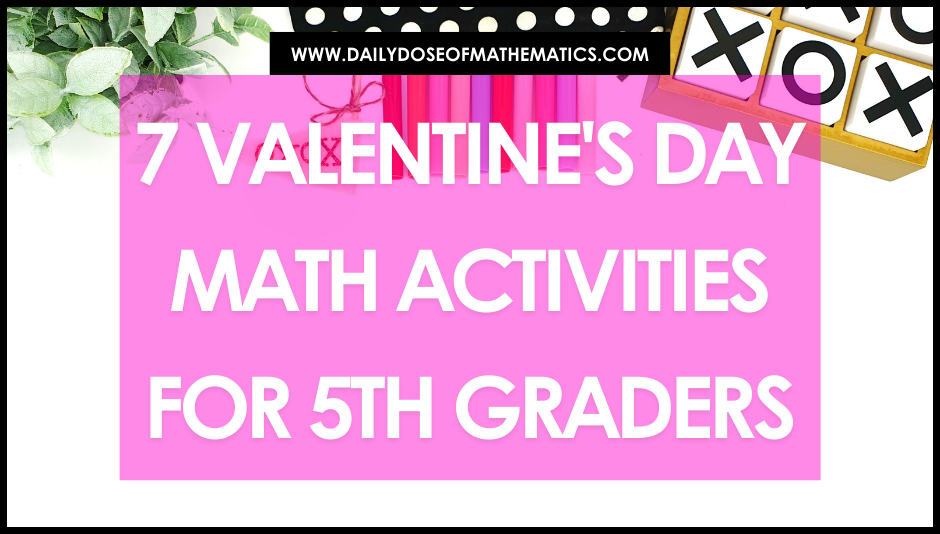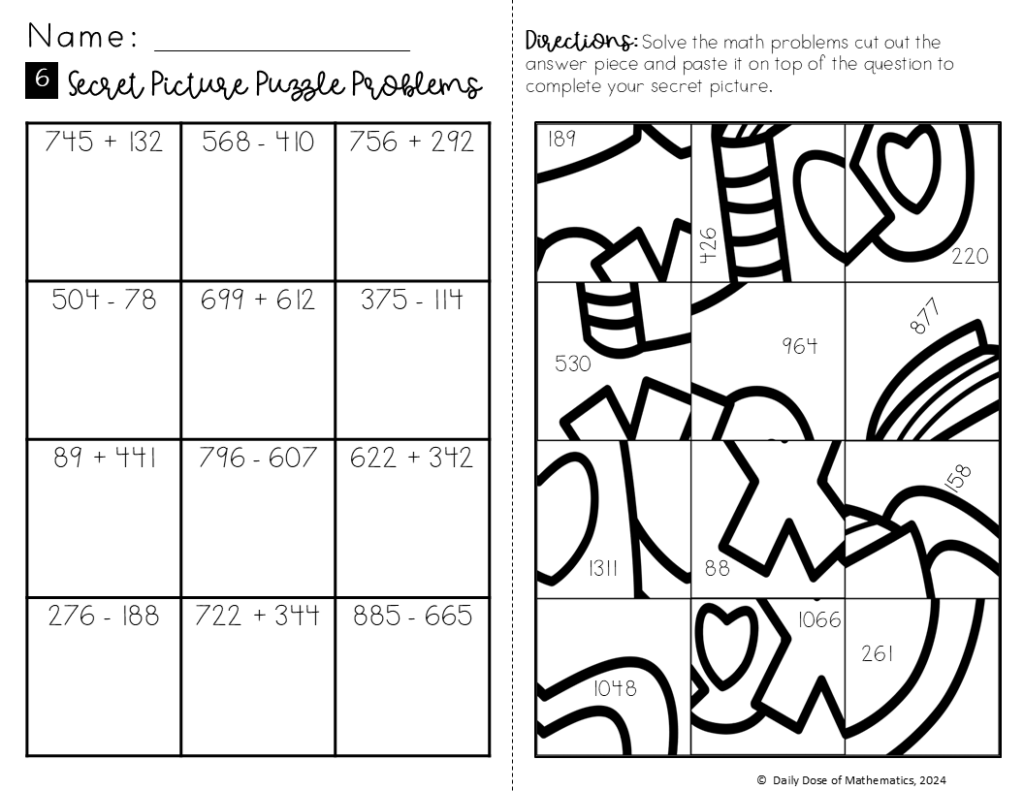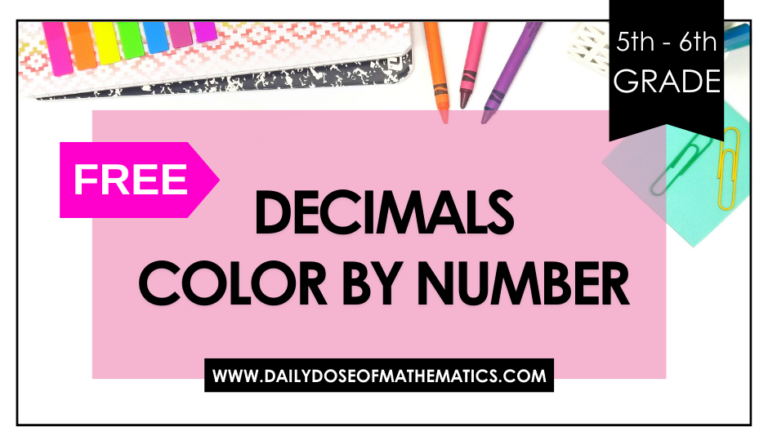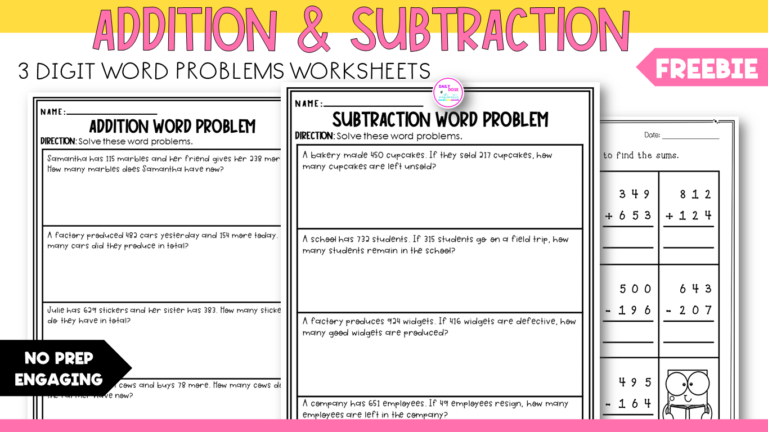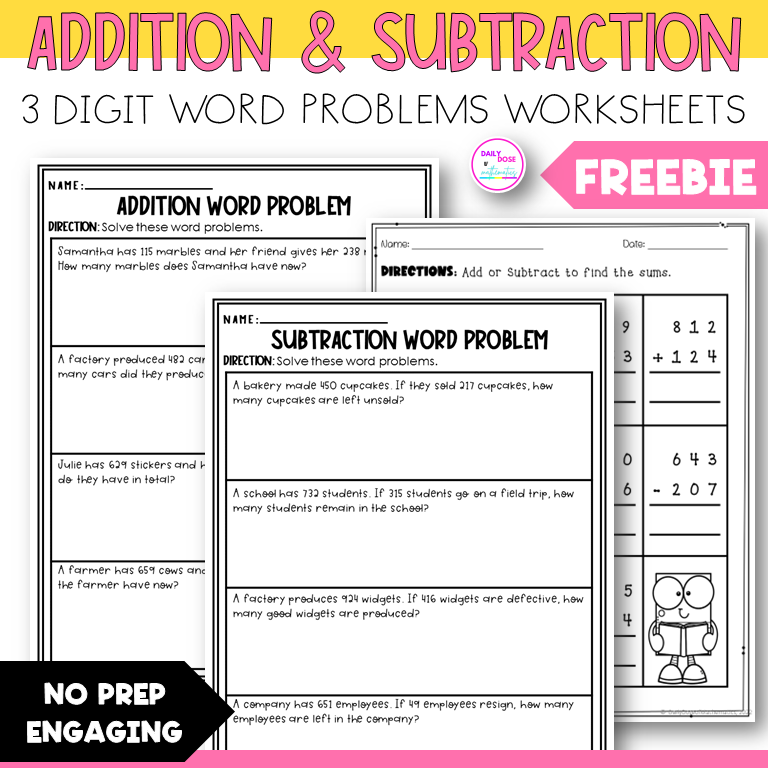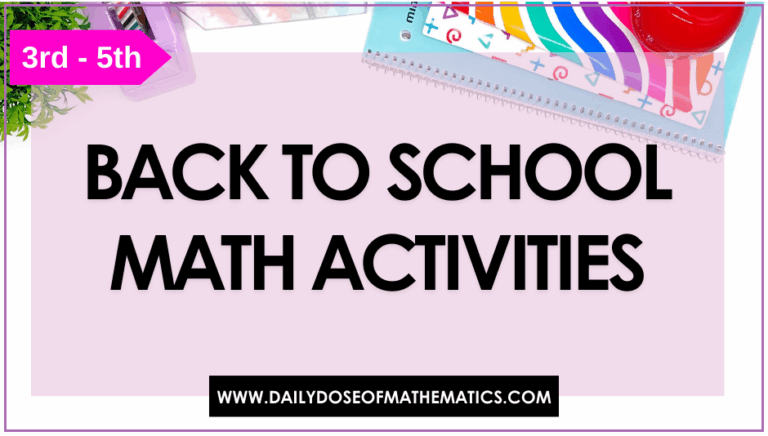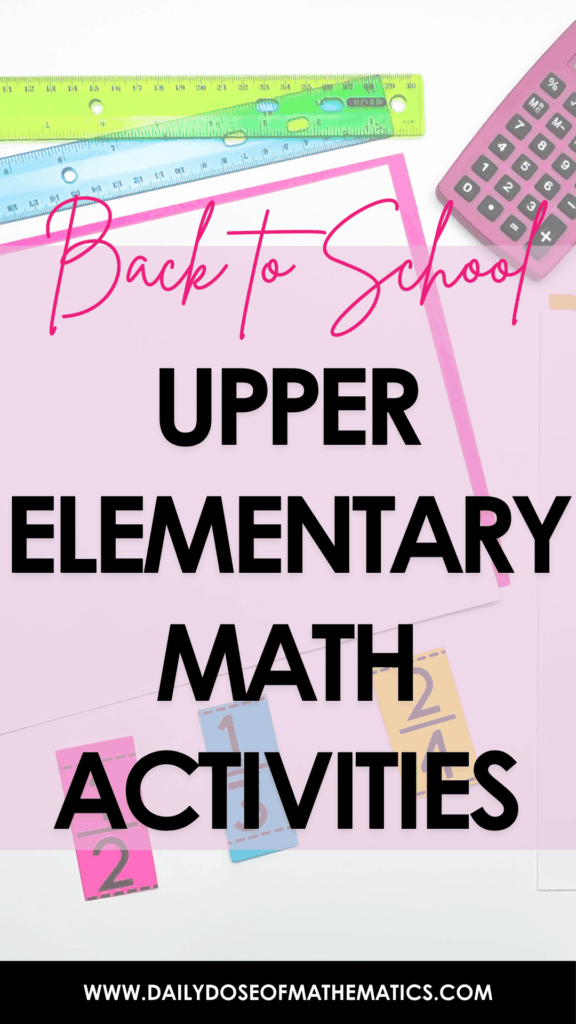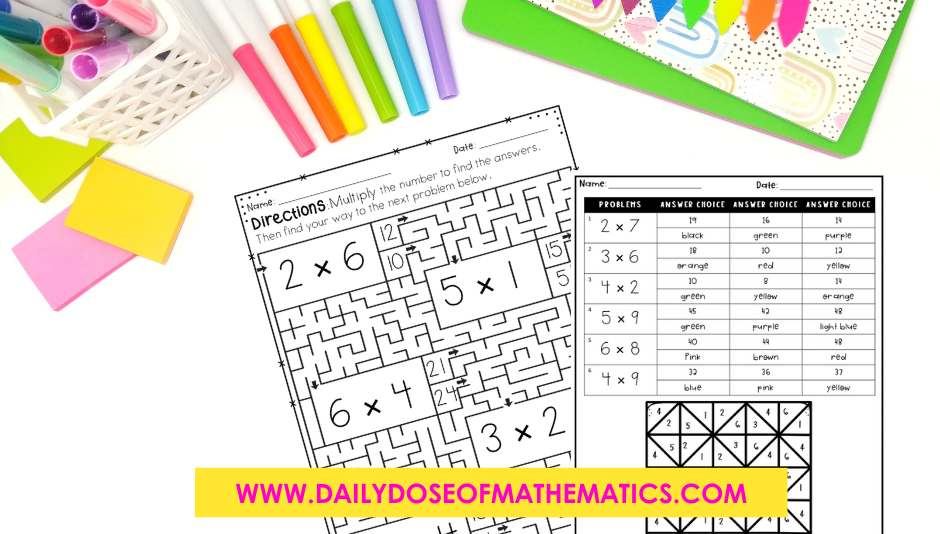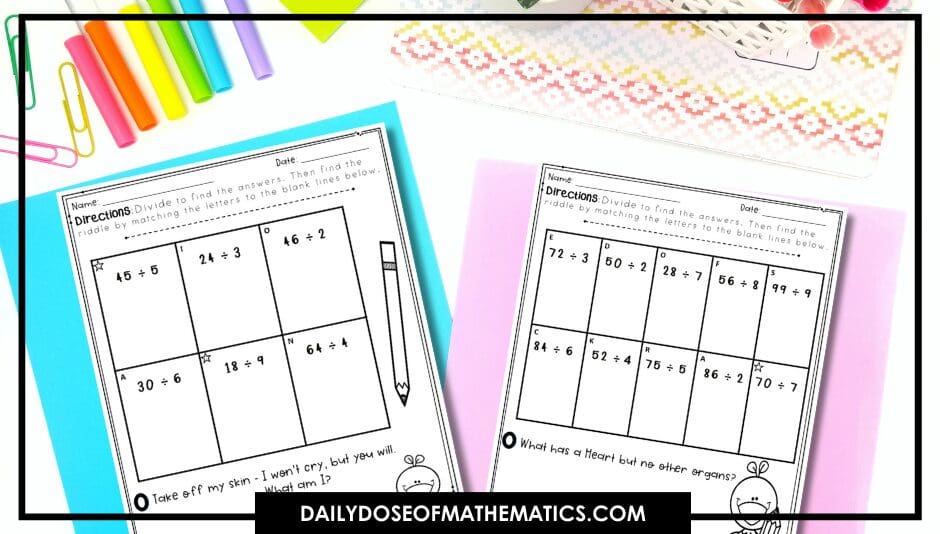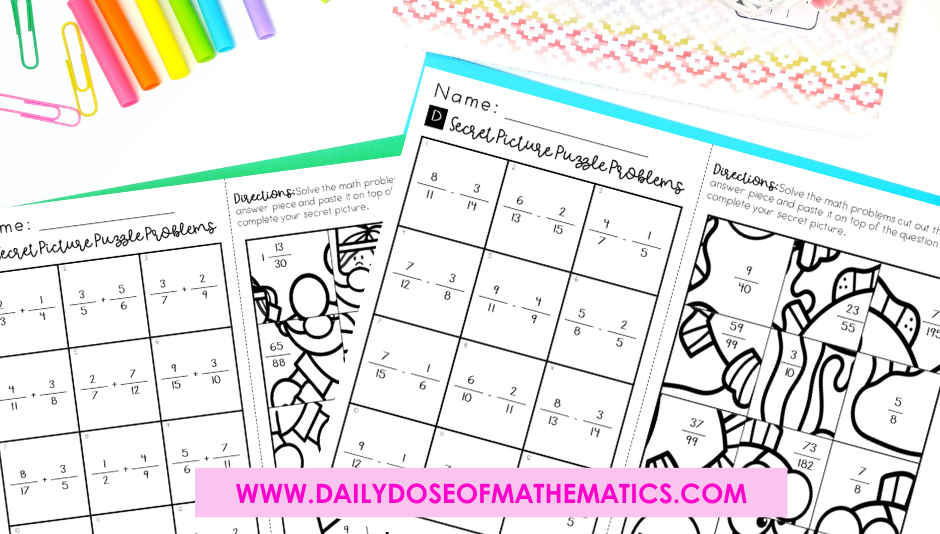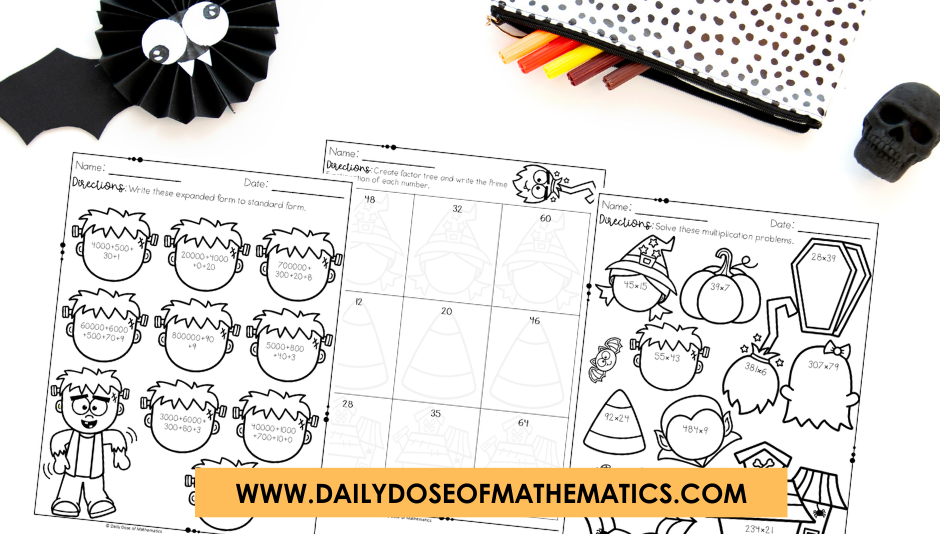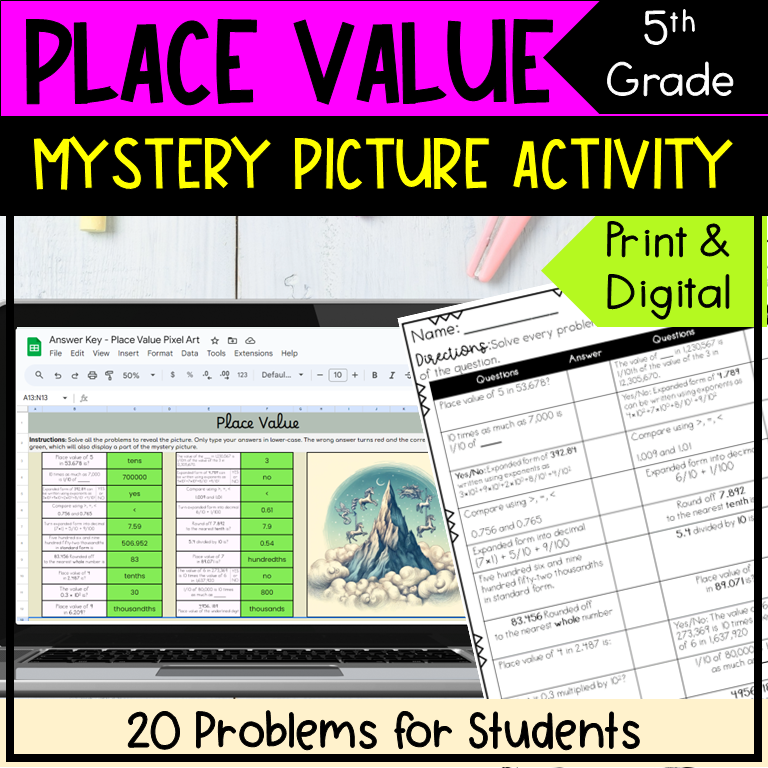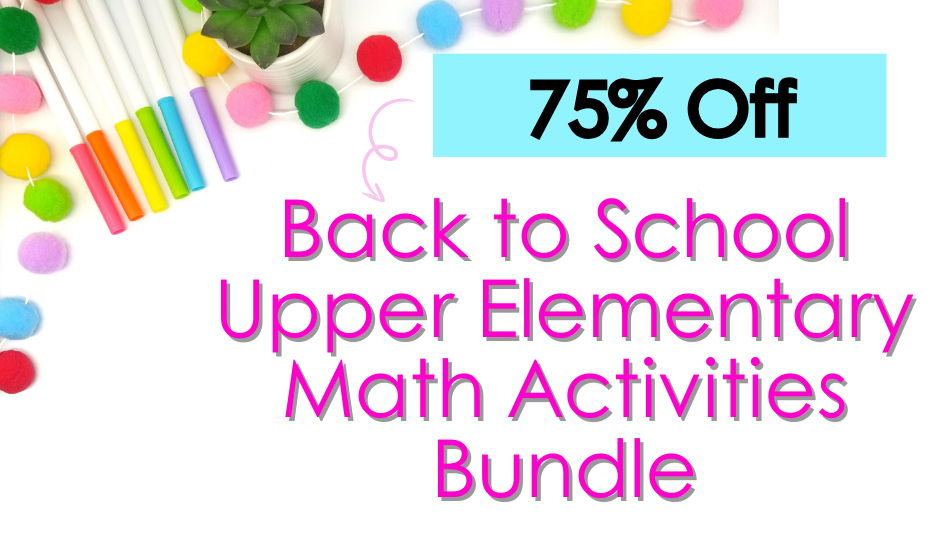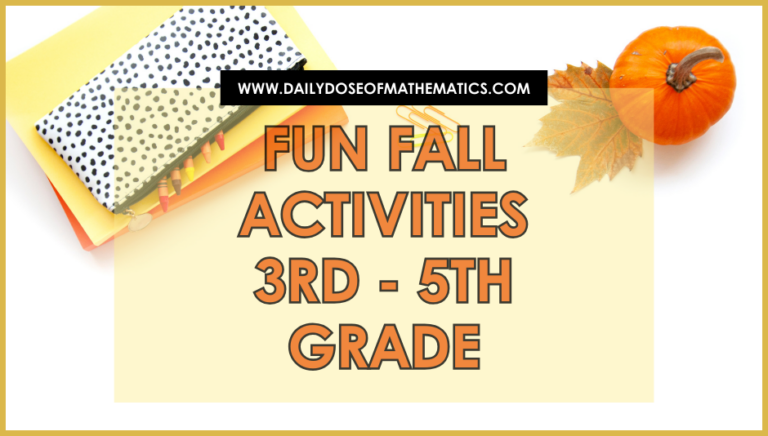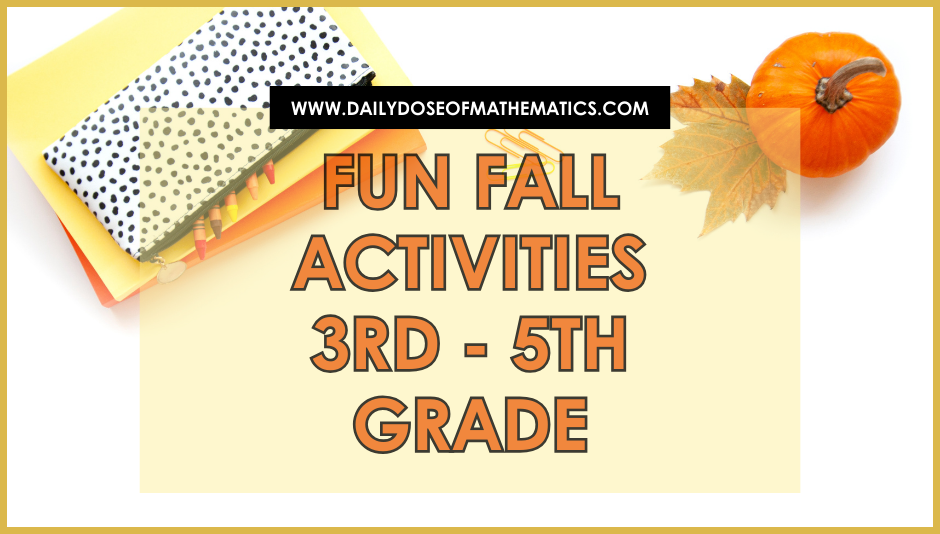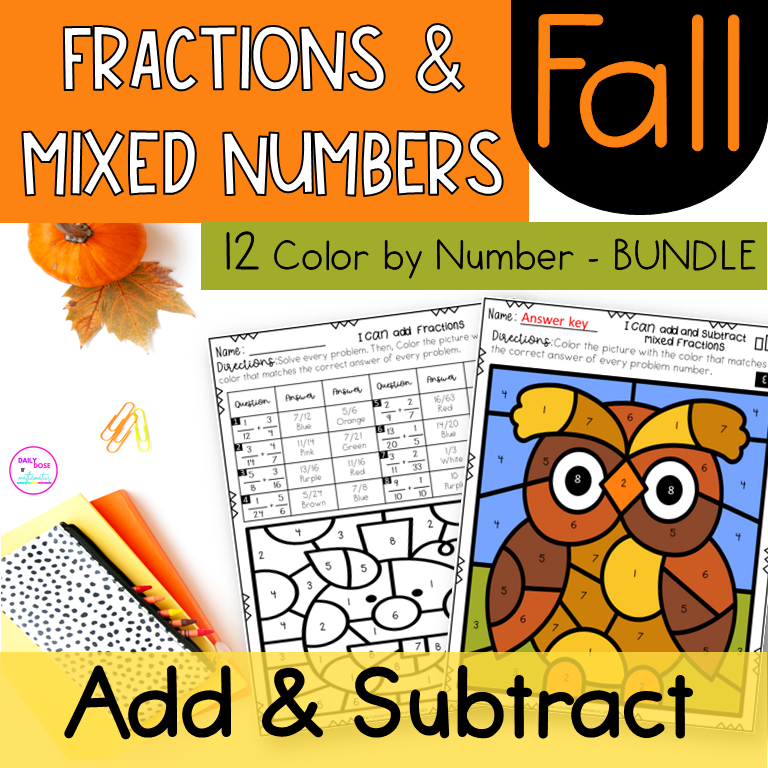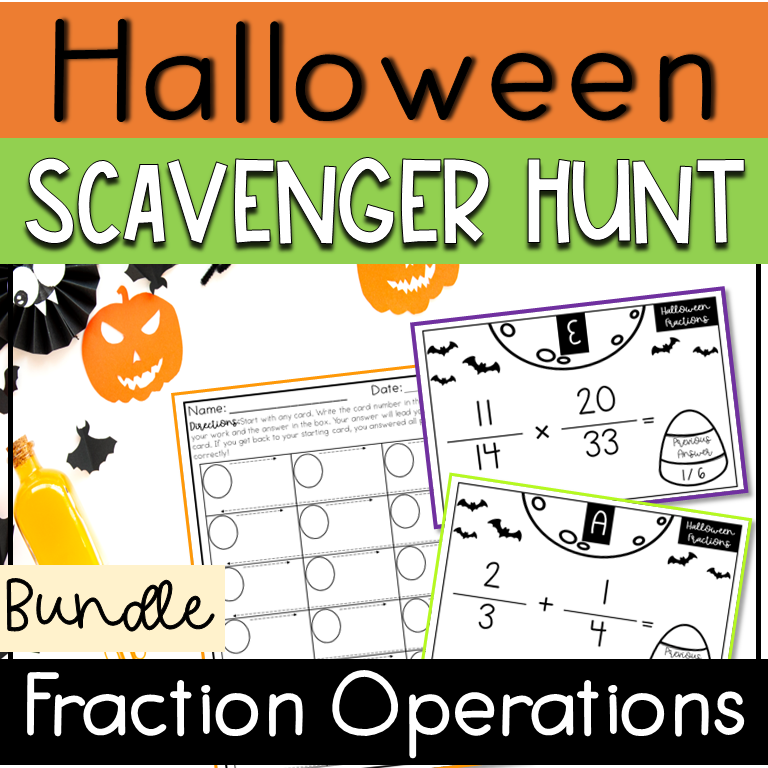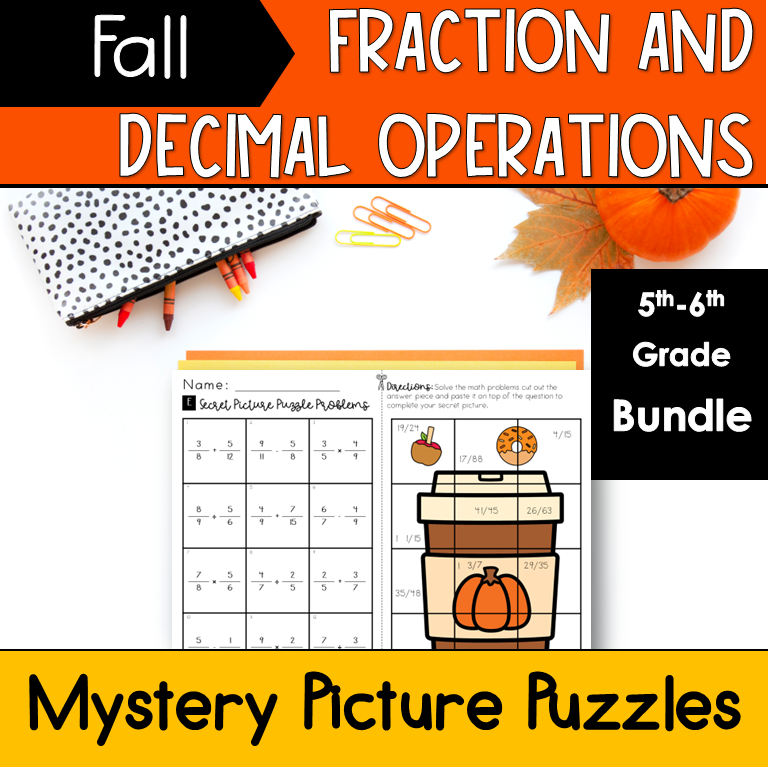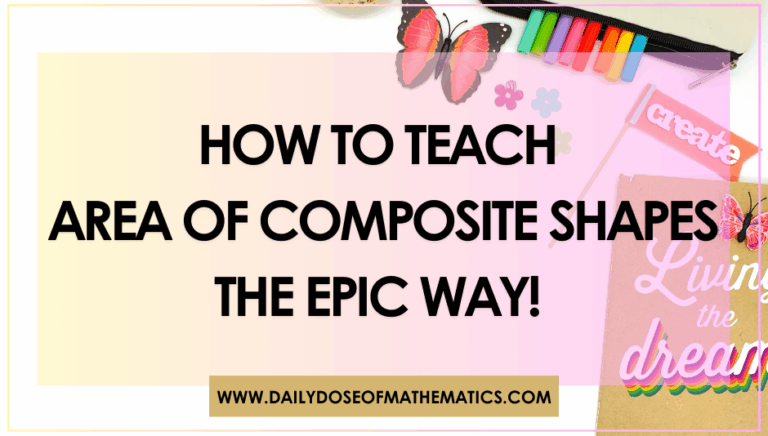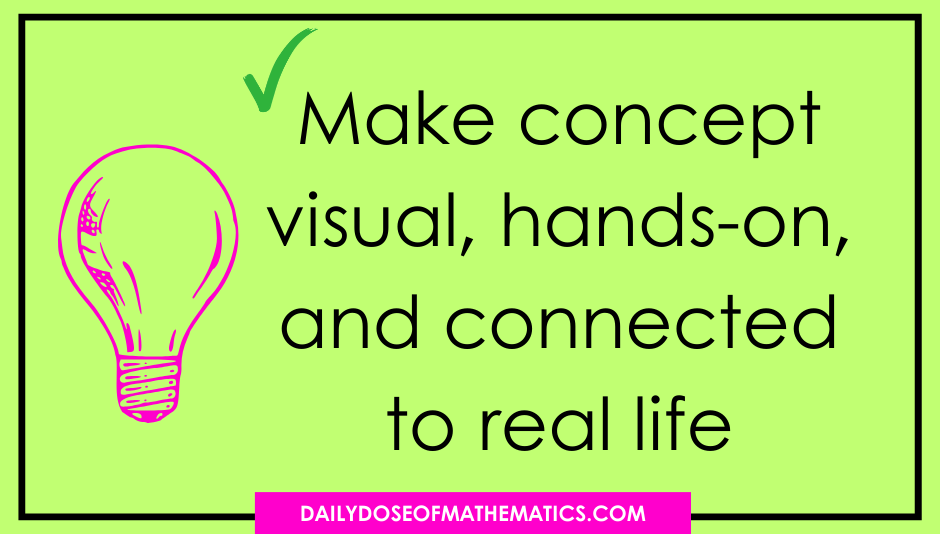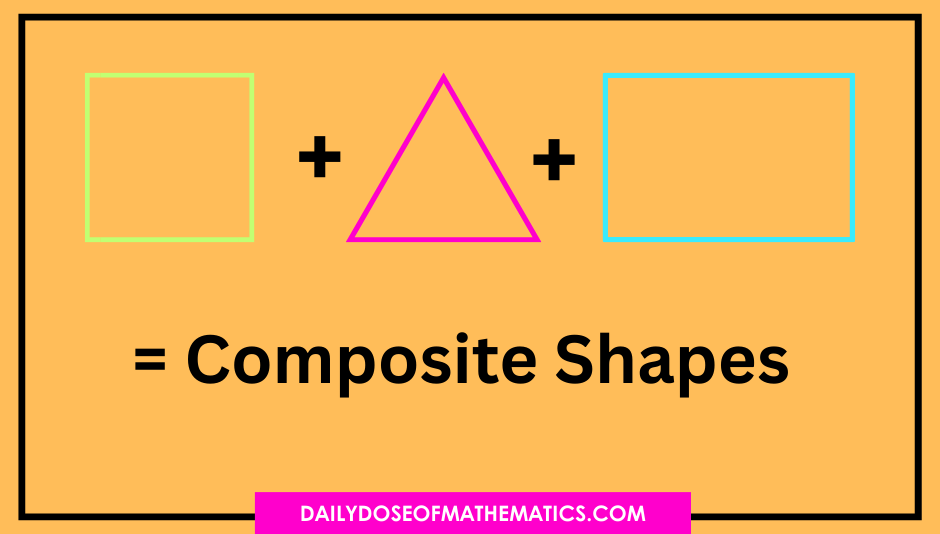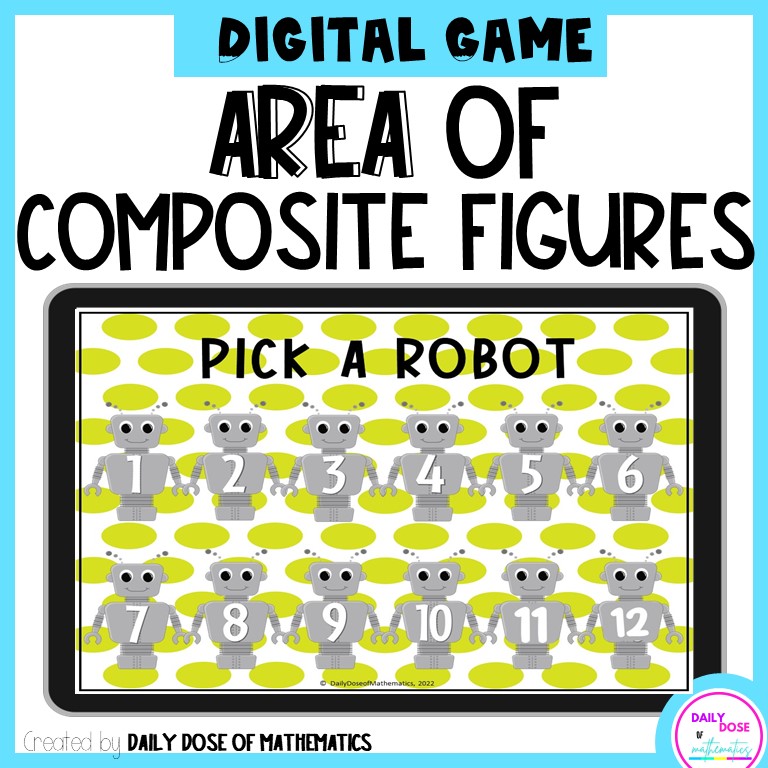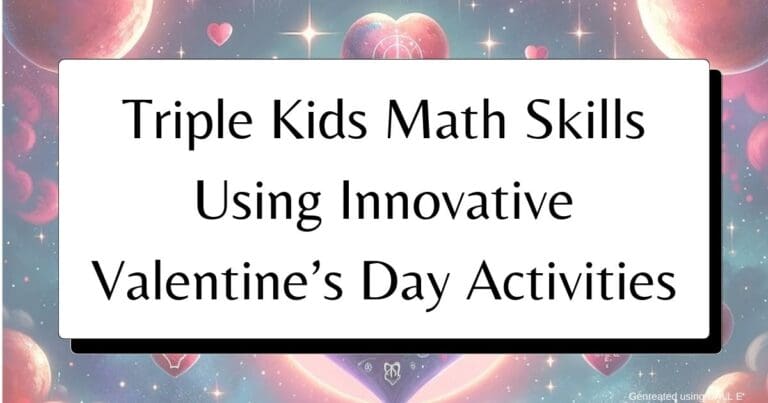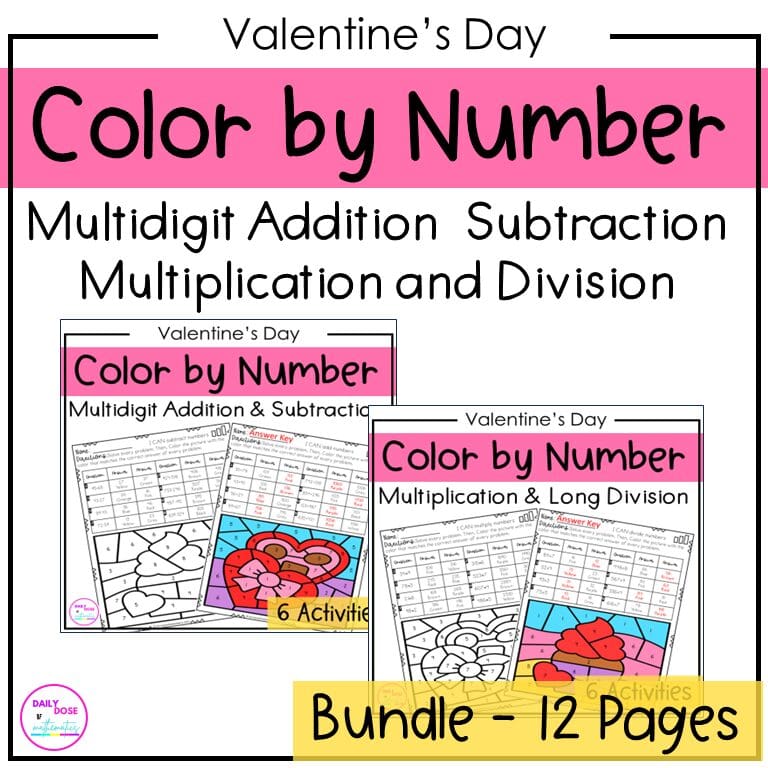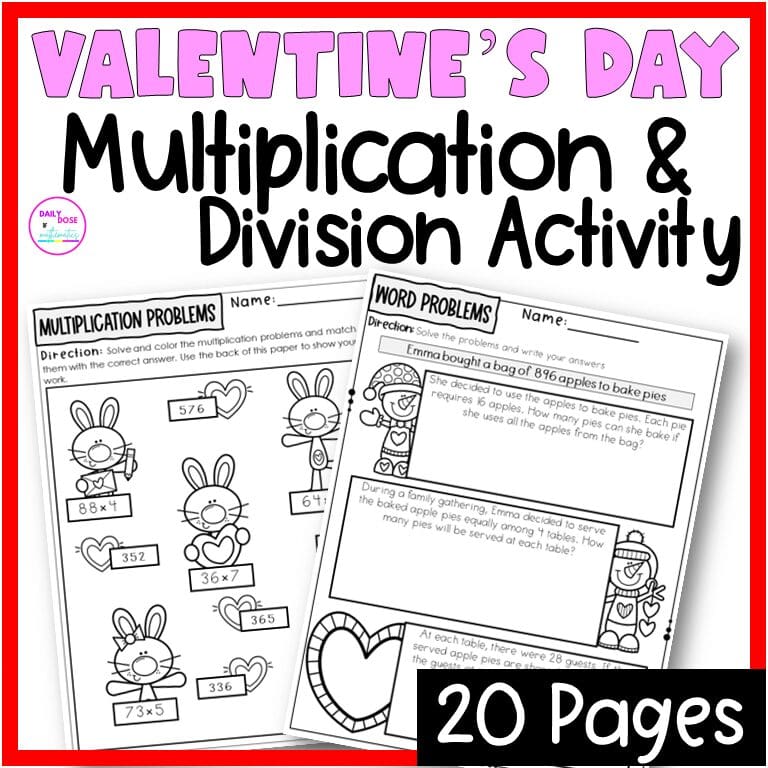7 Valentine’s Day Math Activities for 5th Graders
So you have taught fractions unit to your 5th grade kids…Now what?
There are many ways you can keep your students practicing there fractions skill this valentines without feeling overwhelm.
This Valentine’s Day get your 5th graders math game strong by using meaningful activities that help them practice various math skills they have already learnt.
one thing I would advice before starting is do not just make this season all about hearts and candies use it as a perfect opportunity to get your kids more engaged in math fun!
So if your goal is to engage your students with math fun… interactive math activities both print and digital is the way to go.
But before we get started a quick reminder, if you need free math activities and worksheets to try with your 5th grade kids, join the newsletter and get them delivered straight to your inbox!
Now let the fun began, here are seven exciting math activities that will help your 5th grader’s attention and get them to practice key mathematical skills.
1. Mystery Picture Puzzles
Want to practice multi digit addition and subtraction with regrouping but do not want it to be a boring activity? Mystery picture puzzles are the best way to do it while making it a fun interactive activity.
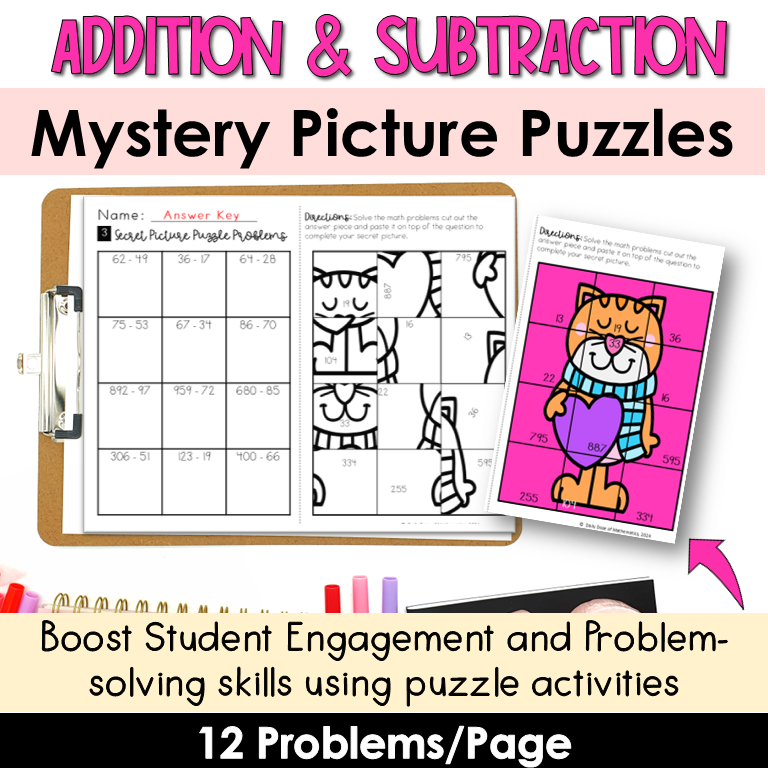
Your kids will practice their 2 and 3 digit addition and subtraction skills by solving these problems and putting together the puzzle pieces to reveal the picture.
Because look – we math teachers need to know what kids know and what needs more practicing so we can keep our math class more interesting.
So if there is any activity that I can use with my kids to practice their basic operations skills while solving and building a puzzle, I’m am here for it.
How it works:
Prints out the puzzle worksheet and hand it over to the kids. Let them cut the puzzle pieces on the right side.
Once that’s done let them solve and put the mystery pictures together to reveal the picture.
As your students complete the puzzle and uncover the picture you can even instruct them to color it and make it a fun art piece for their classroom bulletin board decoration.
Key Skills this activity helps kids with:
- Problem-solving
- Attention to detail
- Addition and Subtraction fluency
2. Color by Numbers
When it comes to practicing math facts especially multiplication and division some things are easier than others. And honestly coloring math activities is like one of those things.
For my kids multiplication and division are the skills that they need more practice with than anything else.
And to tell you the truth it is better to get them to practice these skills more during their upper elementary years more so it’s easier for them to build other math concepts during their middle school years.
This is the exact reason why I have whole year themed multiplication and division color by number activities.
That mainly focuses on multi digits like 2 or 3 digits multiplication and division practice.
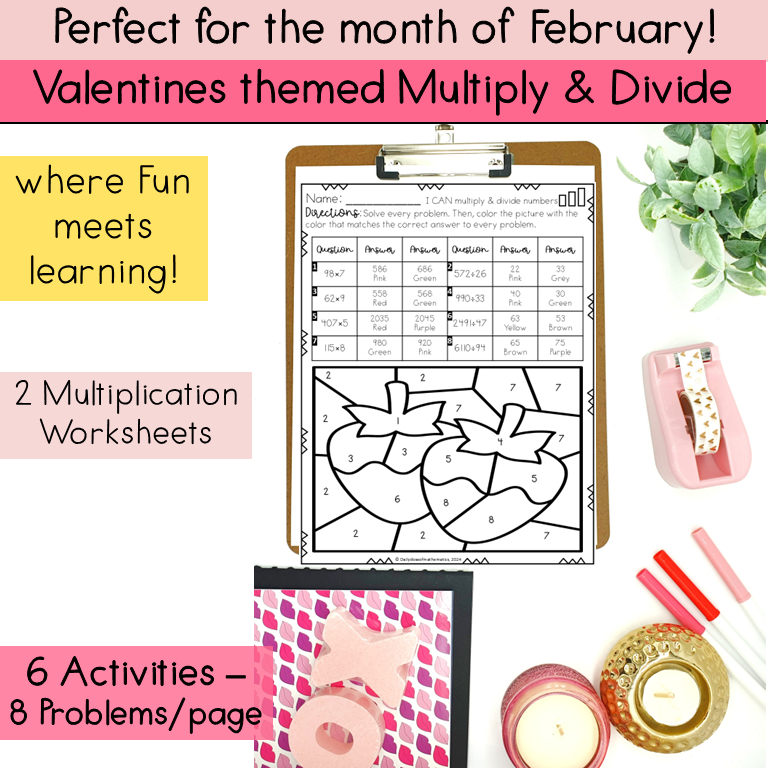
The best part is each page has just enough math problems for kids to complete in a day making it a perfect addition to your daily math lesson.
Here is how it works: Kids use the back of the page to solve the problem. Each problem has 2 answer options along with the color they need to use to color the picture.
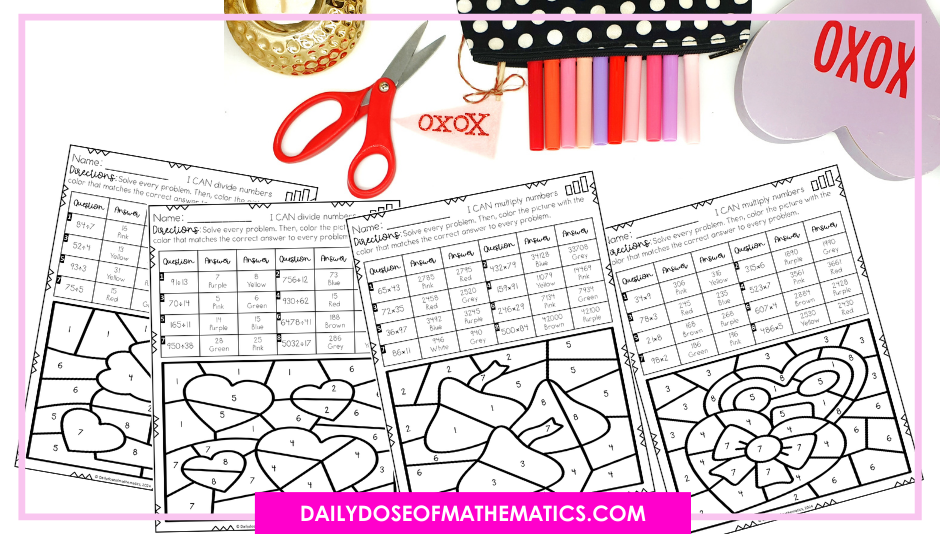
Students solve and select the right option and work on there coloring part of the activity.
Does this sound boring? Nope. Click here to see Valentine’s Day color by number on my TPT shop.
3. Independent Work Pack
Need a comprehensive 5th grade math activity pack that students can complete independently. Include:
- Word problems
- Word search puzzles
- Matching activities
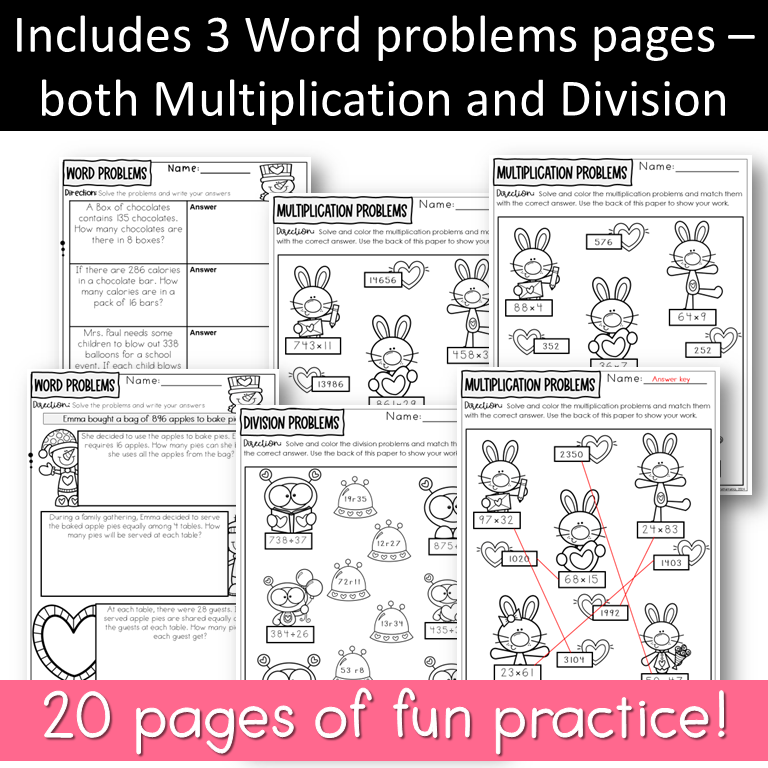
Benefits:
- Self-paced learning
- Skill reinforcement
- Develops mathematical independence
4. Pixel Art Digital Valentines Day Resource
I do not know about you but I still feel like I haven’t fully got the hang of using digital activities in my class.
Honestly to leverage technology to get kids practicing math concepts like fractions addition and subtraction with unlike denominator is a bit mess but we are getting though it using Pixel Art Google Sheets(TM) activities.

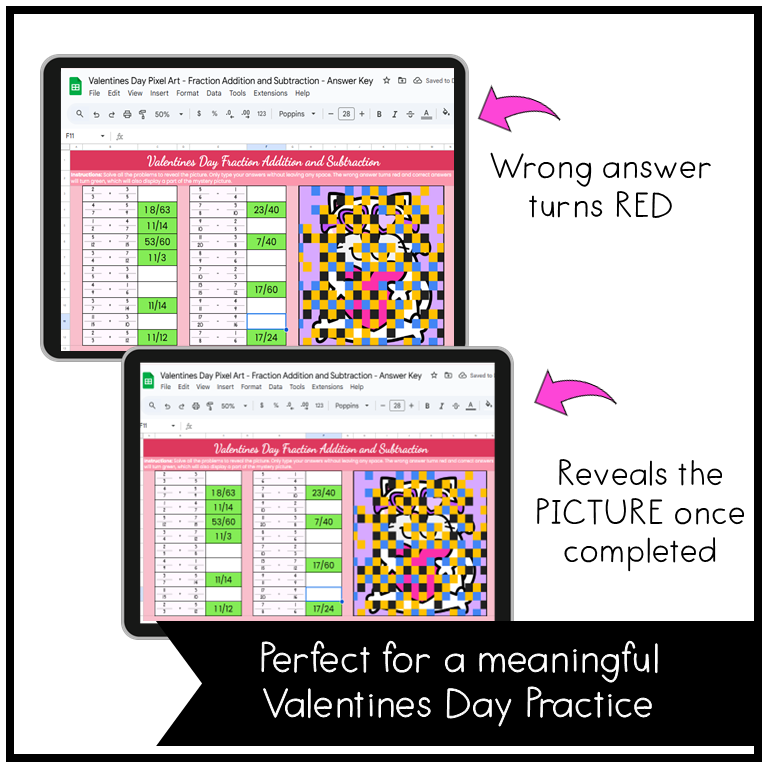
I assign my students thise activity on their devices and they solve math problems to reveal a pixel art Valentine’s design. The more kids solve the problem right the more picture is revealed which is super FUN!
So if you need a digital valentines day fraction operations resource check out the link to my TPT shop. Its fun, its engaging and most of all its self checking so kids get immediate feedback.
5. Fraction Heart Puzzles
Puzzles puzzles and some more puzzles. I you one for the people who hear about differentiation or centers in meetings and are excited to try new thing to make it work then this one is for you.
Puzzles are the best part of my centers. Although they take up a little bit of time to prep but its so worth the effort.
Kids not only have to solve the problem but also find the answer to complete their puzzles making it a perfect game based activity to try during math centers.
The best part… it’s free!
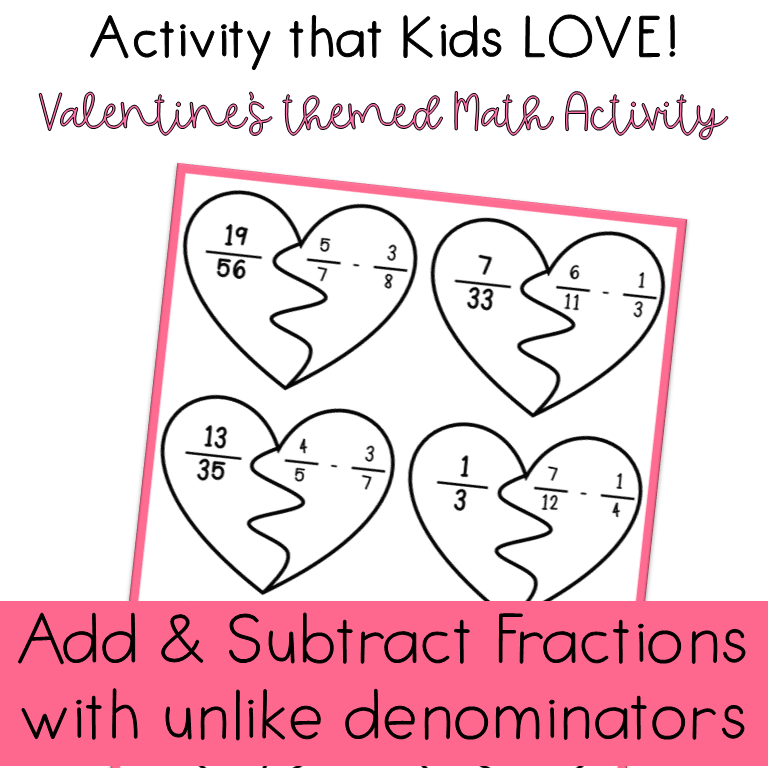
But if those same puzzles are heart shaped fractions problems that’s even better. You can check them here.
6. Valentine’s Day FREE Solve the Room
This my friend is what I ALWAYS do when I do not have anything planned for the day and need something quick to engage but still keep them learning.
The idea is simple you write math problems on task cards and display them at various points in your classroom.
Kids walk around the room and solve the problems on the recording sheets.
They feel engaged and fun. Not sticking to their chairs and able to walk around is what makes this activity one of my ids favorite thing.
And honestly, I do not blame them. So if you want to transform your classroom into an interactive collaborating math learning place try out math solve the room activities.
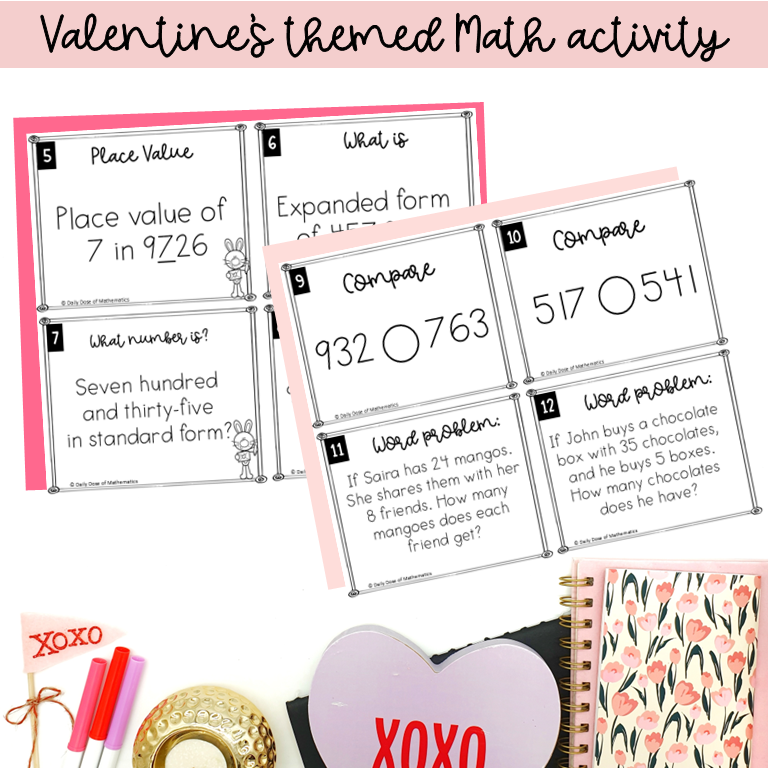
7. Valentines Day Fraction Worksheets
We all use worksheets to put the practice kids need to improve their understanding.
In fact, who does not like to use worksheets to make learning fun with Valentine’s-themed images so kids are more likely to solve them and not feel bored?
These Valentine’s Day math worksheets go beyond traditional worksheets by offering engaging, interactive ways to practice their math skills.
By using themes of love, you are helping students see math as an exciting, enjoyable subject.
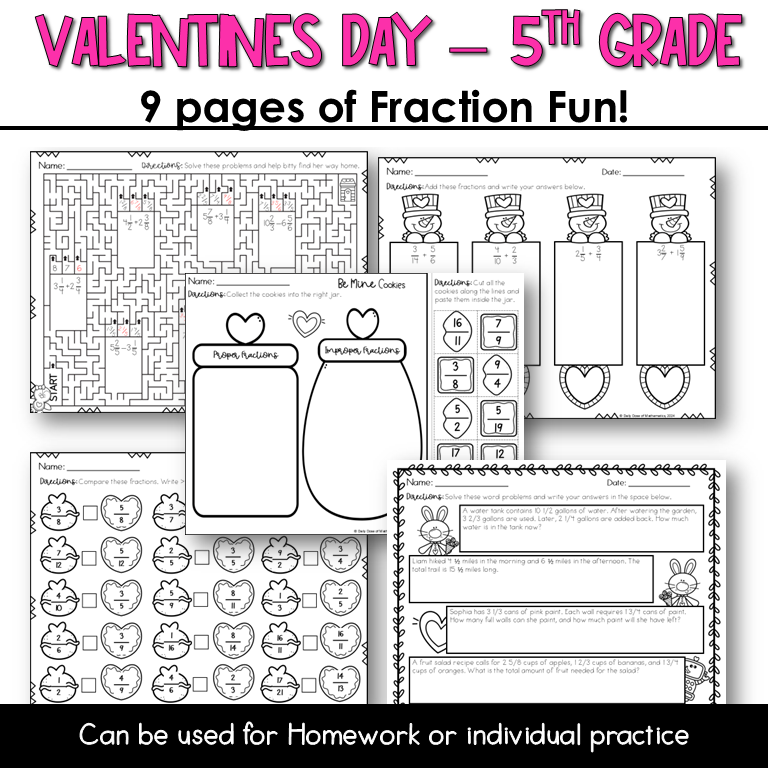
How do you make learning fun during valentine’s day? Let me know in the comments!
Want to get access to exclusive FREE content? Sign up for the newsletter below!
Once you sign up, you’ll receive the freebies to help you teach elementary math!

